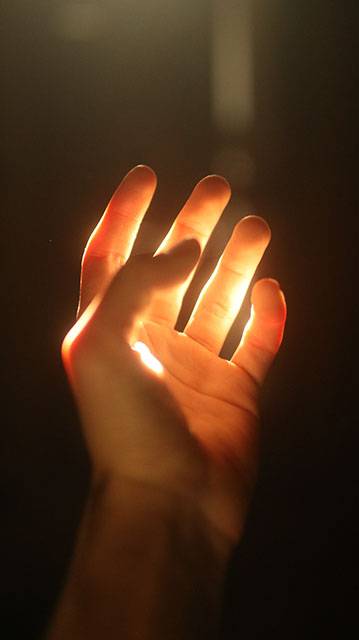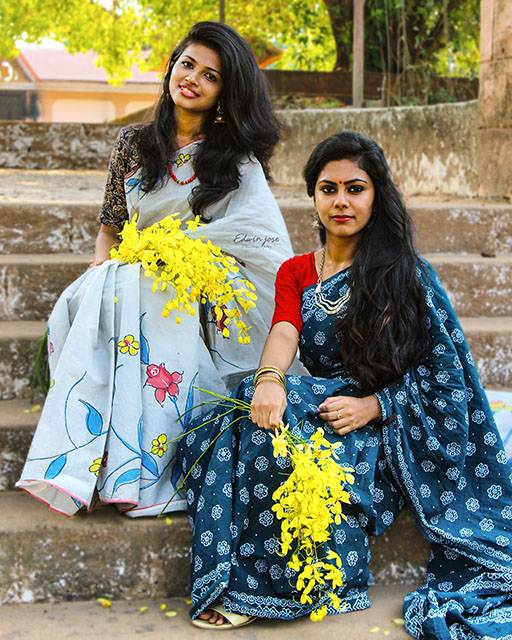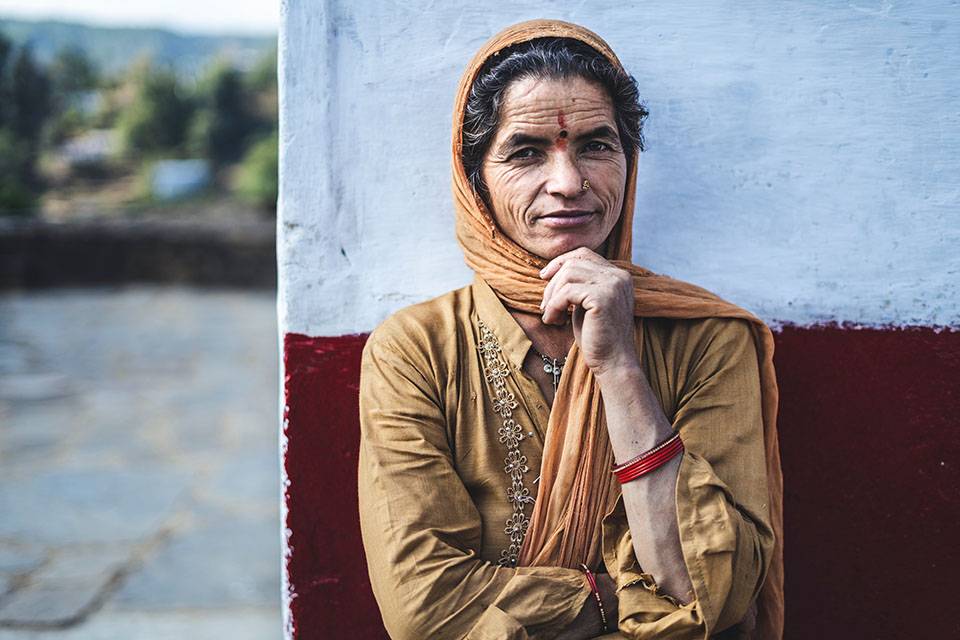Did you know that the clothes you wear can affect you at a spiritual level?
As a result, your personality and behavior can be influenced.
Did you know clothes and our personal belongings can be contaminated by negative energies ?
Did you know the purpose of the clothes and their relevance, impact on our being?
To start with, one of the purposes of clothes is to protect us from attacks of negative energies taking place through the medium of distressing waves around us.
People in different countries have different styles of wearing clothes. Every culture is represented also by the dressing style worn by the inhabitants. But clothes too carry spiritual significance by the way they are worn.
I will try to help in determining to choose the right set of clothes to imbibe more Chaitanya (Divine consciousness) and sattvikta.
According to the science of Spirituality, clothes should be conducive to the reception and emission of sattvik waves into the atmosphere. It is only then can we be protected from attacks of negative energies in the atmosphere which take place through the medium of distressing waves.

India has many festivals. Festivals are celebrated throughout the year and they warrant elaborate preparations in terms of food, home décor, rituals, and clothing. Festivals like Baisakhi and Bihu have their roots in nature, with no similarity in the celebrations of both. During Pongal, women wear Kanjeevaram saris with heavy jewelry, while Lohri sees women in bright Salwar Kameez. On Teej celebrated in a big way in Rajasthan, women sport mirror and bead-embellished Ghagra Cholis. In contrast, the women in Bengal wear traditional red-bordered white sarees during Durga Puja.
The common element in all the festivals is the resplendent colors, the emphasis on jewelry, and authentic ethnic traditional wear.
No matter how Westernized we all become but during festivals, we all wear ethnic clothes. The reason may lie in the Acharsamhita (Compilation of Code of conduct) according to which the Hindu Dharma gives importance to sattvik clothes such as clean-washed, simple, plain, light in color with minimum designs.
Clothes of a uniform spiritually beneficial color, devoid of any design are considered more sattvik. This is because such clothes face no hindrance in attracting the Nirgun (Non-materialized) Chaitanya waves from the Universe and, depending on the need, emitting them maximally into the atmosphere. Plain-color clothes are a symbol of transparency and are hence considered more sattvik from the spiritual perspective.
How should one wear sattvic clothes?
These have been decided based on the sattvik arrangement of the clothes. Clothes such as the nine-yard sari, six-yard sari (A traditional attire of Bharatiya women), petticoat & blouse, dhoti, Sovale-uparna (A clean, washed, silk or cotton dhoti to be worn during puja), kurta-pyjama that take the wearer from Nirgun to Sagun (Materialized) are followed in Hindu Dharma.

The benefits of wearing Sattvik clothes are many. If the undergarments and the outer garments are clean and sattvik, and if they have suitable sattvik shape and appearance, the following benefits are obtained:
- The outer garments can absorb the flow of Chaitanya from the atmosphere to the maximum extent and then they can transmit it into the body.
- The clothes help activate the Sagun Chaitanya. Simultaneously, on the strength of the Nirgun Principle, the introverted attitude provides energy to the karma in every activity.
- If the clothes are neat and tidy from the spiritual perspective, then even the individual imbibes modesty. This modesty compels it to conduct itself at a spiritual level. Once the bhav develops as a consequence of the Spiritualized behavior, the individual’s journey to God-realization begins.
This journey, ultimately, is responsible for uniting the individual with the eternal. Therefore, we find that, in Hindu Dharma, spiritual training is provided in such a way that even the clothes and ornaments create positive sanskaras on the individual during their formative period.
One will now ask effects of inappropriate clothes.
An individual who wears clothes with variegated, predominantly black and bright colors gradually becomes Tama-predominant and eventually turns into a ruffian.
This means that an individual should not dress perversely. The overall appearance of an individual is generally decided by the clothes he wears. The modern youth, under the pretext of fashion, wear multicolored clothes, short, tight-fitting clothes such as jeans, stretchable clothes, etc. This reflects a perverted dressing style. In simple words, a perverted dressing style generates Raja-Tama-predominant vibrations. Such a dressing style makes a man’s intelligence depraved, a slave to evil tendencies. He comes under the control of the foes, such as lust, anger, and becomes a victim to attacks of negative energies. As against this, wearing sattvik clothes enable the wearer to imbibe Chaitanya, thereby making his mind and intellect sattvik. Besides helping attain good character and wisdom, it also helps in gaining protection from attacks of negative energies.
Every object has indigenous vibrations with its attributes. The vibrations of clothes depend on factors such as the type of cloth, shape, color, design, stitching of the cloth, etc. The more sattvik these components are, the greater is the Sattva component of the final product, that is, the clothes.
We also wonder why clothes made from natural fibers such as cotton and silk are preferred over those made from artificial fibers such as nylon or terry cot, which colors are sattvik? why clothes without heavy designs are more appropriate? why purity of clothes is essential etc. It will be seen that while selecting sattvic clothes, more than our likes or dislikes, it is the study of the science of vibrations that proves beneficial.
An average individual should wear sattvik clothes so that he can imbibe Chaitanya from them. The temperament of an individual with bhav (Spiritual emotion) is sattvik and because his activities are full of bhav, he can easily imbibe Chaitanya. Sattvik clothes do increase their sattvikta; besides, society also benefits from their sattvikta.

Sattvik clothes also help create positive sanskaras (Subconscious impression) on children. Hence, children should preferably wear sattvik clothes.
Modern-day clothes enhance demoniacal conduct amongst people.
In Kaliyug, the Tama component in the atmosphere is widespread, and even clothes in today’s times promote demoniacal conduct. Having abandoned the age-old Hindu culture, human beings in Kaliyug have become perverted.
This perversion is also apparent in the clothes they wear. Clothes with pictures of animals and ghosts, with a torn appearance, with sequins and colored hanging threads, those that expose the body – all these make the individual an easy prey to attacks of negative energies. Ultimately, the individual becomes immoral and spends all his life in a perverted manner.
As you grow spiritually and make realizations about life, you may reject what you see as fickle money-driven changes. Fashion can be one of those. Fashion is driven by the general opinion you are more or less ‘desirable’ or ‘trendy’ by what you wear. Once you have moved on from what other people think of you, fashion becomes unimportant.
You may find yourself moving into more comfortable clothes because you refuse to suffer in clothes for the sake of fashion. This may not be a move from suits to robes all in one day, but you will definitely feel a shift. Your new spiritual wardrobe will more than likely fill up with styles and designs that have been around for hundreds of years. Therefore, they never go in or out of fashion.
From a spiritual perspective, the fashion industry tends to emanate spiritually impure vibrations, whether it's contemporary or high-end fashion. This is due to the industry’s focus on external beauty, which is fleeting. Additionally, the type of clothes that are marketed nowadays is often negative in nature. Whether it is the dark colors or shocking prints and patterns used or the overly suggestive clothing designs. All these things contribute to creating spiritually impure vibrations.
Every object has indigenous vibrations with its own attributes. The vibrations of clothes depend on factors such as the type of cloth, shape, color, design, stitching of the cloth, etc. The more sattvik (Sattva-predominant) these components are, the greater is the Sattva component of the final product, that is, the clothes. An average individual should wear sattvik clothes so that he can imbibe Chaitanya (Divine consciousness) from them.

The individual selects clothes according to his temperament. People who always wear neat and ironed clothes are disciplined and conscientious. Those who wear casual clothes are frank and whimsical. Those who always wear untidy and weird clothes are lazy and careless. In short, clothes help identify the temperament and personality of an individual. Hence, it becomes necessary that an individual wear clothes complementary to a situation. For example, going for a job interview in neat and ironed clothes demonstrates the qualities of discipline and gentility.
Spiritual clothes are not a category you will find on most fashion websites, but it certainly seems to be a thing.
RELATED TOPICS:#Apparel,Sanjay Lal
Leave a comment
Our email address will not be published. Required fields are marked *







4 Comments
Https://Ukrain-Forum.Biz.ua/Jun 26, 2024 at 16:22 pm
Hi, just wanted to mention, I loved this article. It was funny. Keep onn posting! https://Ukrain-Forum.Biz.ua/
Ritu BhariokApr 20, 2021 at 20:59 pm
Clothes, what a simple word but how meaningful it is .The way we think, the way we express, the way we do things, the way we carry ourselves, the way we respond and many more ...... All collectively demonstrated by our clothes . Our clothes can be simple, ethnic , fashionable, stylish ,... and many more , but helps our inner message and actual personality to travel to others . No doubt, this article is just too good and coneys a good message .
Maj Gen Ranvir yadavApr 17, 2021 at 13:48 pm
Very very interesting article...I agree with the author the clothes we wear reflect our nature n life values.. Traditional wear is never goes out fashion..Indians have been first n best producers of cotton .. Muslin..World war cotton made in India. We need not ape the West.. Article is educative too, I didn't know a lot of things explained therein...
ShantanuApr 16, 2021 at 22:10 pm
A great take on fashion and spirituality. Have not come across such a context any time recently. I believe there is a lot of potential and substance in the thought. And there is a vast audience for such a philosophy. Would love to get more insight on this and also can contribute. Appreciate ☆:)